Environmental Issues Class 12:- Over years, the exponential rise in the population has led to the increased demand in supply of food, water, shelter, electricity, clothing, automobiles, and many such commodities. These demands exert immense pressure on the natural resources which contribute to the pollution of the air, water, soil, the environmental pollution ultimately. Hence it has become very essential to check degradation and depletion of our valuable natural resources without hindering process of the development.
Environmental Issues Class 12 – Introduction
Through this chapter, we can understand importance of our natural resources, numerous issues persisting in environment in which we reside and counter-active measures we can adapt in direction of a healthy environment.

Important questions on environmental issues will help you to enhance your conceptual knowledge.
Important Questions for Chapter 16: Environmental Issues Class 12 – Very Short Answer Types Questions
Q.1. Why is the lead-free petrol or the diesel recommended to reduce the pollutants emitted by the automobiles?
A.1. Diesel and the petrol are added with the lead in form of Pb(CH3)4b and Pb(C2H5)4 as an antiknock agent.
Q.2. To include the noise as air pollution, in which year was Air Prevention and Control of the Pollution Act amended?
A.2. It was included in the year 1987.
Q.3. Which city in India has all public road transport running on the CNG?
A.3. The city is Delhi.
Q.4. What is a possible source of the silt that gets accumulated in the water tanks?
A.4. Soil particles that are carried out with the water from the rivers and the deep borewells etc.
Q.5. What do you mean by cultural eutrophication.
A.5. It is a phenomenon wherein the effluents from the homes and the industries fuel the cultural and the natural ageing process of the water bodies which otherwise takes thousands of the years.
Q.6. Mention two severe effects of the particulate matter on the human health.
A.6. The two severe effects are –
1.Inflammation
2. Damage to lungs and premature death.
Q.7. Write the raw material for the polyblend.
A.7. They are made by a mixture of the two or multiple polymers, mainly the plastic waste products.
Q.8. Why does road life factor increases by a factor of three upon the addition of the blends of the bitumen and the poly blend?
A.8. Plastic increases melting point of the bitumen that prevents its melting given India’s hot climatic conditions, where the temperature frequently crosses 50℃. Because of plastic blend, rainwater will not be able to penetrate.
Q.9. Write two examples of the plants that are used in the agricultural fields as the windbreakers.
A.9. The Calotropis and the Vetia act as the windbreakers.
Q.10. Mention the name of an industry which can cause – eutrophication, thermal and the air pollution.
A.10. The thermal power plants, chemical fertilizer units, smelting, refineries, metallurgical processing units, steel mills cause these pollutions. It may results in the eutrophication is chemical is released from these industries.
Environmental Issues Class 12 Quiz
Q.11. What do you mean by algal bloom.
A.11. Presence of the organic matter in the water acts as a food source resulting is the extensive growth of the planktonic algae in the water bodies and is called an algal bloom.
Q.12. What do you mean by biomagnification?
A.12. The increase in concentration of the toxic substances at the consecutive trophic levels in food chain is known as biomagnification.
Q.13. Write three major impurities found in the domestic wastewater.
A.13. The biodegradable organic matter, Pathogenic microbes, dissolved salts such as the nitrates and the phosphates.
Q.14. What do you mean by reforestation.
A.14. It is process of restoring a forest which existed once but was removed at some point in past.
Q.15. How can the electronic wastes be treated in most efficient way?
A.15. It can be treated by Recycling.
It has two advantages:
1.It blocks entrance of the toxic substances into fragile environment and groundwater through a landfill.
2.It lowers utility and mining of the primary raw materials.
Q.16.What do you mean by Environment?
A.16. Environment is everything that is around us, which includes both the living and the nonliving things such as soil, water, animals and plants, which adapt themselves to their surroundings. It is the nature’s gift that helps in nourishing life on earth.
Environmental Issues Class 12 Environmental Issues Class 12 Environmental Issues Class 12 Environmental Issues Class 12 Environmental Issues Class 12 Environmental Issues Class 12
Q.17.What do you mean by the Biodiversity Conservation?
A.17. Biodiversity conservation means the protection, conservation and the management of the biodiversity in order to obtain the sustainable benefits for the future generations.
Q.18.What do you mean by Deforestation?
A.18. Deforestation can be defined as large-scale removal of the trees from the forests (or other lands) for facilitation of the human activities. It is a serious environmental concern since it can result in loss of the biodiversity, damage to the natural habitats, the disturbances in water cycle, and the soil erosion. Deforestation is also a contributor to the climate change and the global warming.
Q.19.Write the main environmental issues?
A 19. Some of major environmental issues are as follows:
1.Ozone Depletion.
2.Greenhouse Effect.
3.Global Warming.
4.Desertification.
5.Deforestation.
6.Climate Changes.
7.Loss of the Biodiversity.
8.Disposal of the Wastes.
9.Pollutions.
10.Overpopulation.
Q.20 Define the Solid Waste Management?
A.20. Solid-waste management is defined as discipline associated with generation, storage, collection, transfer and transport, processing, and disposal of the solid waste in a manner that it does not have a harmful effect on environment.
Environmental Issues Class 12 – Short Answer Types Questions
Q.1. Can curtains and carpets positioned on floor or surfaces of the walls reduce noise level? Justify.
A.1. Yes, it can reduce the noise level. They act as the muffling devices and absorb sounds of the moderate level.
Q.2. With its advantages and the suitable examples, explain the hybrid vehicle technology.
A.2. It is a technology used to run the vehicles on the dual modes like the compressed natural gas or the petrol. CNG is a green and clean fuel so it is useful to decrease the environmental pollution and also conserve the petrol fossil fuel.
Q.3. Will the water turn septic if dissolved oxygen level drops to zero? Which factor could lowers dissolved content of the oxygen of an aquatic body.
A.3. Yes, it can be turned into septic. Fertilizers in the aquatic bodies are responsible for lowering level of the dissolved oxygen.
Q.4. Write the name of greenhouse gas, write its possible source of production on a larger scale. Write its harmful effects?
A.4. Some of the common greenhouse gases are carbon dioxide, methane, an oxide of nitrogen, water vapour, etc. Due to the large scale deforestation, unlimited burning of the fossil fuels causes level of the carbon dioxide to increase thus leading to the global warming. Incomplete decomposition by the anaerobic methanogens, garbage dump, flooded paddy field and marshy land is few of sources leading to an increase in levels of the methane.
Rice fields of Asia, releases about 90% of methane.
Q.5. Is planting the trees and the shrubs near the boundary walls of buildings a common practice? Mention its usage.
A.5. Yes, it is a common practice. It acts as a boundary for the sound and checks the noise pollution. It also keeps a check on the primary air pollutants such as the dust, flies ash, etc.
Q.6. Why is it recommended to have a larger forest cover for the hills than the plains by National Forest Commission of India?
A.6. It is because, large forest areas of the hills checks the soil erosion, percolation and recharges groundwater. It monitors the landslides and the other such natural calamities and also promotes maintenance of the original flora and fauna of hills.
Q.7. Can the burn and slash cultivation, also known as the Jhum cultivation become eco-friendly? If yes , explain how?
A.7. Yes they can become eco-friendly, if:
1.Crop rotation is practised to reduce the soil fertility.
2.By shortening cropping period and keeping fallow period for longer period.
3.Small widely scattered plots are used for the cultivation
Q.8. What do you mean by Snow-blindness?
A.8. Snow blindness is the excessive absorption of the ultraviolet-B-radiations that causes the inflammation of cornea.
Q.9. How is bird population affected by the DDT?
A.9. Calcium metabolism in the birds is influenced by the high concentrations of the DDT that causes thinning of eggshell and hence their premature breaking, gradually causing the declination in bird population.
Q.10. Answer following questions based on the figure A and B.
Solar Energy Panels
Windmill
a) True or False – Power generation is the non-polluting with these two methods as given in above figure.
b) Write the two applications of the solar energy.
c) What do you mean by a photovoltaic cell.
A.10.
a) True. Figure A is a solar energy panel and figure B is a windmill device.
b) The following are the application –
Solar hot water system (geyser) and solar lamp (lantern) are the two applications.
c) It is a form of a photoelectric cell that converts the light into the electrical energy and is a solar cell.
Environmental Issues Class 12 – Long Answer Types Questions
Q.1. Explain in brief about the electronic wastes. Mention the various sources of the e-wastes and the issues associated with its disposal.
A.1. Solid wastes can be recyclable, biodegradable, non-biodegradable and can be categorized as the municipal wastes – sewage, hospital and nursing wastes, industrial wastes and the electronic wastes.
Mobiles, irreparable computers, and other such electronic goods are called e-waste or the electronic wastes. Some of their sources are as follows –
Many developing countries like India, China imports the irreparable electronic goods for their precious metals like the nickel, gold, and copper.
E-wastes should be disposed of in the landfills or incinerated.
Manual extraction of the metals from the e-wastes takes place in the developing countries. Hence working with them can expose one to the toxic substances present in it, leading to the skin diseases.
Recycling is only solution for the e-waste treatment.
Q.2. Explain about the organic farming. In a developing nation like India, mention its benefits as a viable practice.
A.2. In an eco-friendly and a pollution-free environment, organic farming mainly aims at the sustainable production. Cultivation on the land happens through the techniques such as the green manure, crop rotation, composting and biological pesticides along with the beneficial microbes instead of the pesticides and the chemical fertilizers.
Some of its benefits are:
1.Regulates the diseases and pests without causing harm to environment.
2.Maintains along-term soil fertility.
3.Assures that the water remains safe and clean.
4.To make it economic, use resources which already exists with farmer.
5.Produces the high-quality crops and the nutritious food.
Use of the organic farming techniques in the developing nations makes much more sense. Modern agricultural practices make use of the expensive herbicides and the chemical fertilizers which ooze out from soil and contaminate water bodies damaging fertility of soil.
Q.3. Write causes and severe effects of the soil salinity and waterlogging in green revolution?
A.3. Soil salinity and the waterlogging are caused by the huge irrigation without suitable drainage of the water. The constant presence of the water trails salt to soil surface, which accumulates as a thin crust on surface of land or begins to collect at plant roots.
The severe effects are as follows –
1.Higher salt content exploits growth of the crop plants
2.Cells of roots get damaged with the saline water saturation.
3.Plants tend to die.
4.The yield of crops is being affected.
5.Farmers procures financial losses.
Economic costs of the management of the soil-water systems to check salination and water logging issues are very high.
Q.4. Explain about the multipurpose trees. Discuss the botanical and the local names of any two multipurpose trees along with their uses.
A.4. Upon plantation, trees that fulfil a number of purposes are known as multipurpose trees. These purposes can be providing shade, wood, fruit, food, soil improvement, etc. They serve a wide variety of the services and functions for the human needs.
Azardicta, Indica – Neem, is specially known for its medicinal benefits. Its leaves, wood, fruit and oil extracted from the wood is mostly used in the ayurvedic medicines.
Due to the chemical azadirachtin, its wood is pest resistant. Coconut palm is the another important tree, with botanical name – Cocos Nucifera belongs to family – Palmae and provides a variety of the functions such as wood, oil, food fibre, etc and has medicinal, fibre and the commercial importance. Another multipurpose tree is Morinaoleifera and Gliricidia septum which is utilized for the fences in the Central America. It provides the firewood fodder and fixes atmospheric nitrogen. It is commonly used for the shade and the animal forage and its leaves are edible.
Q.5. Write about the three basic characteristics of a modern landfill site. Explain the reasons they are used?
A.5. The following are the characteristics:
1.Compaction and integument of waste to prevent it from being blown by wind.
2.Procedures to contains the leachates such as the lining clay or the plastic liners.
3.To extract the gas to use in generation of the power, landfills gas extraction systems are installed.
The following are reasons why their use must be promoted:
1.Through the recycling and the recovery of waste, they triggers waste prevention.
2.A uniform cost for disposal of the waste is created which subsequently will prevent essential transport of the waste.
3.They help in bringing down the negative effects on environment and the risk to the human health that emerges from landfilling of the wastes.
Q.6. Explain working of electrostatic precipitator.
A.6. They can eliminate 99% of the particulate matter that is found in exhaust from a particular thermal power plant through these mechanisms:
1.It contains the electrodes wires which are constantly maintained at a several thousand volts, which provides a corona releasing electrons.
2.The electrons hence released are attached to the dust particles offering them with a net negative charge.
3.The plates that collect, are grounded and draws through the attraction of the dust particles that are charged.
4.The velocity of air is maintained low between plates to facilitate the falling of the dust.
Click here to join out telegram channel for more important questions and answers like this Environmental Issues Class 12





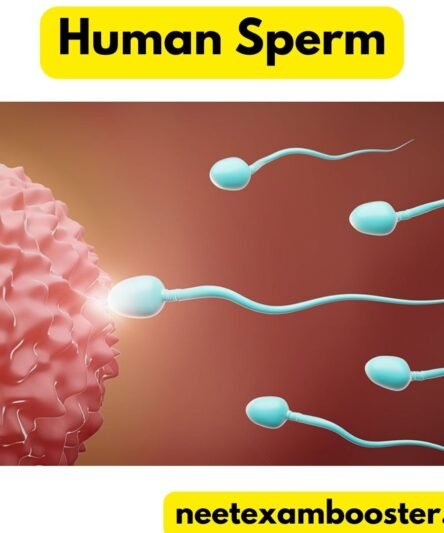



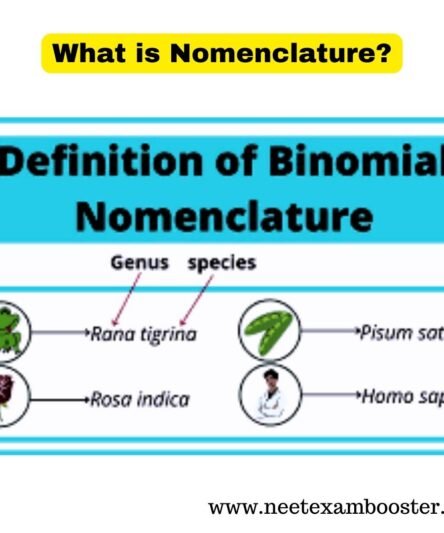
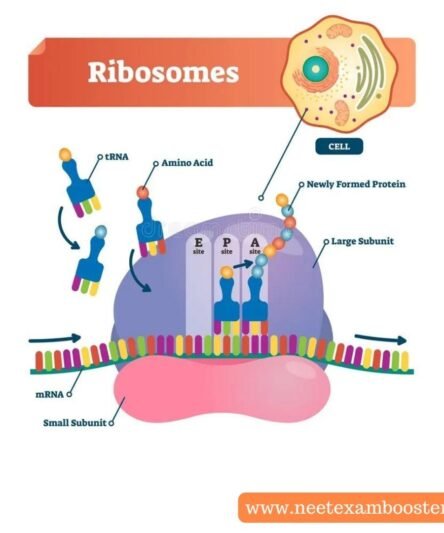

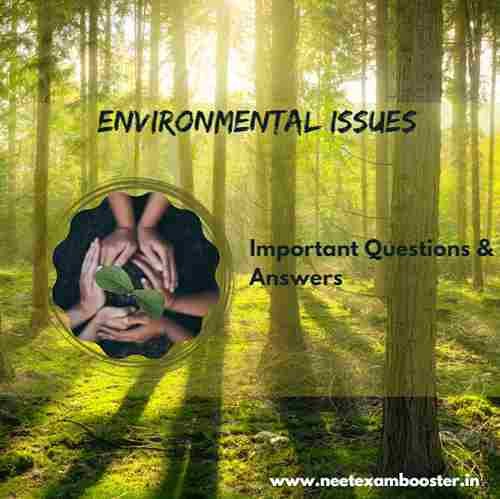
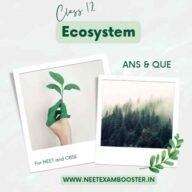




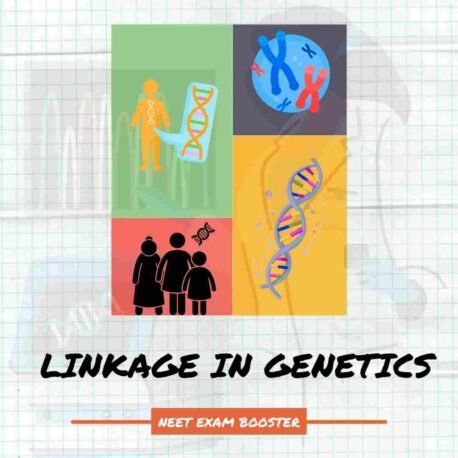

Pingback: What is Mitochondria? Structure, Functions & Definition